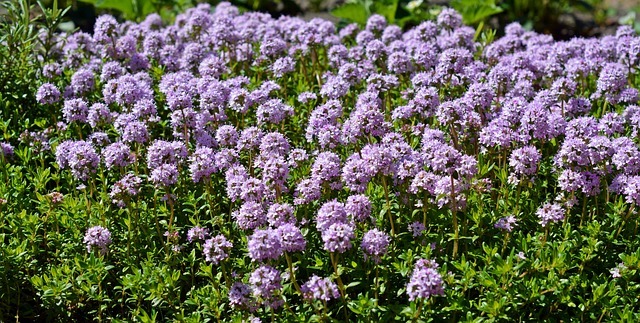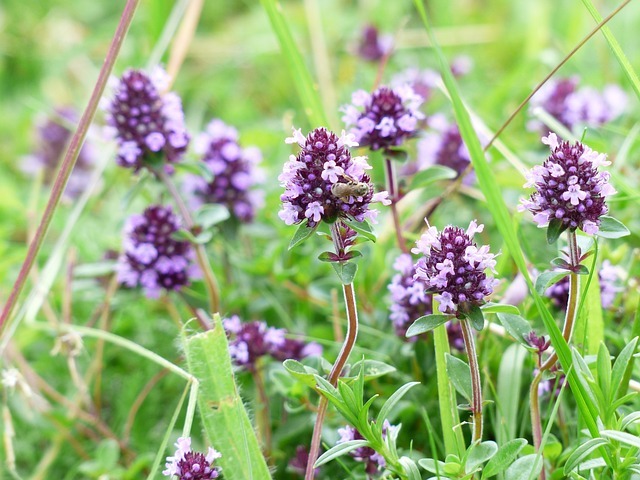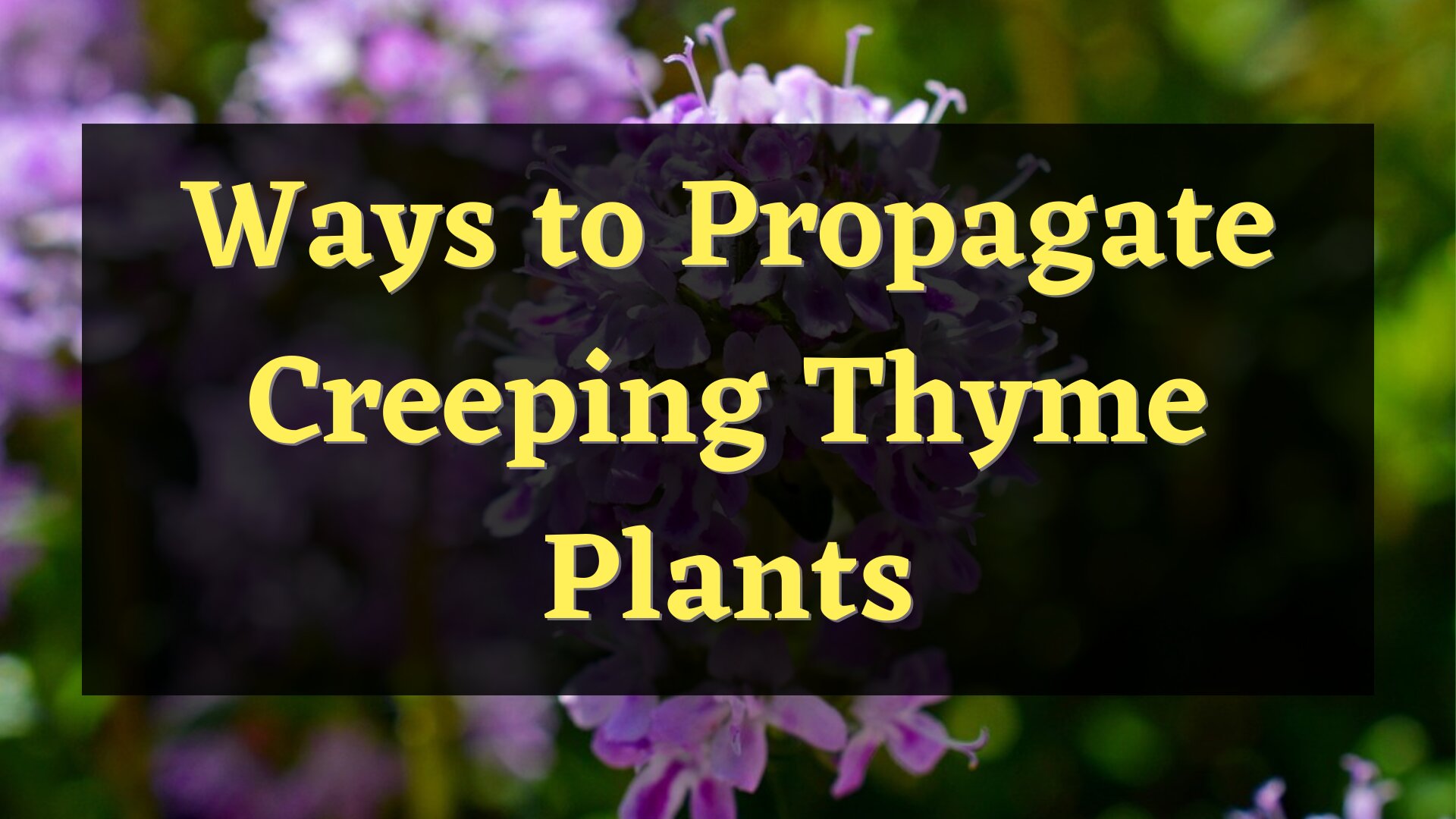To become successful in propagating a creeping thyme plant, you will first need to know the methods that you can use and the steps that come with these methods. In this post, I will introduce you to these methods and will dig deeper into the methods that are commonly used by experienced and less experienced gardeners alike. In addition to all of this, I will also provide you with a bit of information about the creeping thyme plant.
About Creeping Thyme plant
Creeping thyme is known for having a lot of names. It has the scientific name of Thymus Serpyllum and common names of Breckland thyme, Breckland wild theme, wild thyme, or elfin thyme. Creeping thyme is a kind of flowering plant that is indigenous to parts of Europe and North Africa that belongs to the mint family of Lamiaceae.

The creeping thyme plant is primarily used as an ornamental plant, mostly planted in rock gardens, herb gardens, and garden paths. This plant loves sunlight and mostly thrives best when exposed to full sunlight and dry soil. Not only is the creeping thyme considered an ornamental plant, but it is also a medicinal plant that is recommended for people who have laryngitis, bronchitis, cough, and asthma. The astringent action that it has can be applied externally to help disinfect skin wounds that are possibly contaminated.
Creeping thyme plant can also be brewed as a tea to treat dyspepsia, gastritis, and diarrhea.
How to propagate a Creeping Thyme plant?
You can choose to propagate them through the plant’s seed, by stem cutting, or by dividing the adult plant into separate sections and planting each section separately. However, cutting and division are the two most reliable and easy methods of propagating a creeping thyme plant. These two methods of propagation are the most common methods that are used by experienced gardeners and new ones alike.
Propagating through cuttings
One of the easiest ways to propagate a creeping thyme plant is by cutting. Cutting is best done when your creeping thyme is still actively growing. This means spring and summer are the best time to use this method. At this time, you will be able to find much more healthy and large stems that are suitable for the plant’s propagation.
To start this method, you will need to cut the stem right below the nodes where you can see the leaves are sprouting. Remove the leaves at the plant’s base until 1 or 2 sets of leaves remain at the top of the plant’s stem. Find a clean container and fill it with water enough to submerge your cutting nodes. It is advised to constantly monitor the water inside the container. If the water becomes a little bit cloudy, immediately replace the water. Repeat this process for a few weeks until the cutting begins to develop its root system.
Once the cutting successfully establishes its root system, it can be transplanted into a pot filled with soil mixture. To further enhance the probability of successful propagation, you can choose to dip the cutting first in a rooting hormone before dipping it in potted soil. Find a location that has access to sunlight but will allow the soil around your young plant to be consistently moist.
Propagating by division
The second most common propagating method involves digging up a thriving creeping thyme plant and dividing it into separate sections. This method may be faster and is more simple than taking cuttings. However, if you are a little opposed to digging and playing around with your healthy creeping thyme plant, then cutting is the best method that you will want to use.
The key part of this process is to isolate the strong thriving plant and to find the perfect plant that you can dig up without leaving an area that will look obviously vacant after taking the plant out.
The first thing that you will need to do is to sterilize the shovel that you will use to dig up your creeping thyme plant. This will prevent your healthy plant from being contaminated with bacteria. You will also need to use the shovel to carefully divide the plant into two or three sections depending on the parent plant’s actual size. Each of these sections must have a healthy and robust root system that is still attached to them. This part will play a big role in the success of the plant’s propagation.
After dividing the mother plant, the sections should be replanted right away to prevent them from drying up. This will also allow the divided sections to immediately begin propagating. Plant the newly divided sections into their own appropriate potting medium.
Can you propagate a Creeping Thyme plant from seeds?
Although this method is harder than the other two; cutting and division. Propagating Creeping thyme from its seeds is possible. Propagating this plant through seeds takes a lot more time due to its germination process. Seed propagation takes more patience and time than cutting and division.
How fast does the Creeping thyme plant grow?

In the plant’s first year after planting, the creeping thyme plant grows slowly. But the plant’s growth speed begins to enhance in the second year. The speed of the plant’s spreading and its actual mature size varies according to the species that you’ve planted. If propagated from the seed, it will take up to a month before the seed finishes germinating.
Conclusion
Although there are three methods that you can use to propagate a creeping thyme plant, only two of them are commonly used by gardeners. It is because the third method, which is through its seed, is very unreliable and takes more time than the other two methods mentioned above. Creeping thyme plants are both slow and fast-growing plants at the same time. And if you want to propagate a creeping thyme plant, cutting and division are the two sure-fire methods to do it easily and successfully grow one.

Elizabeth Mcmillan is a passionate gardener with a strong interest in plants. She used to be a teacher, but Elizabeth has spent the last few years immersing herself in the world of plants, learning about their biology and cultural value and trying out different ways of growing them in her own garden. Elizabeth Mcmillan loves indoor plants, succulents, and cacti, and her friends and family know her as a plant care expert.







